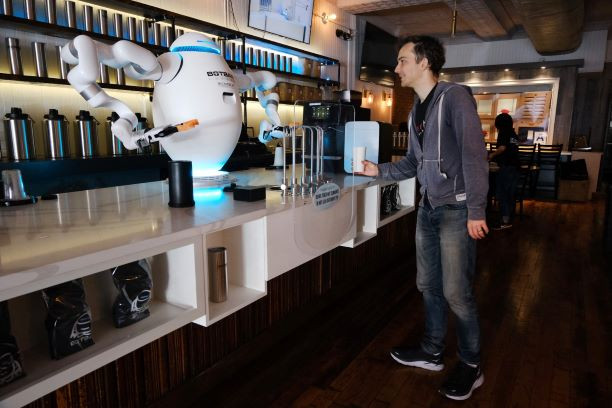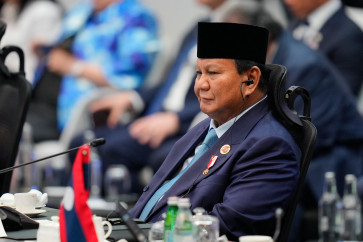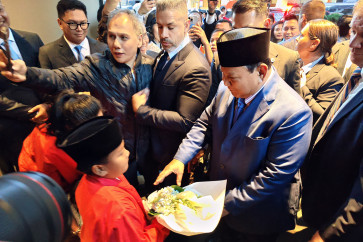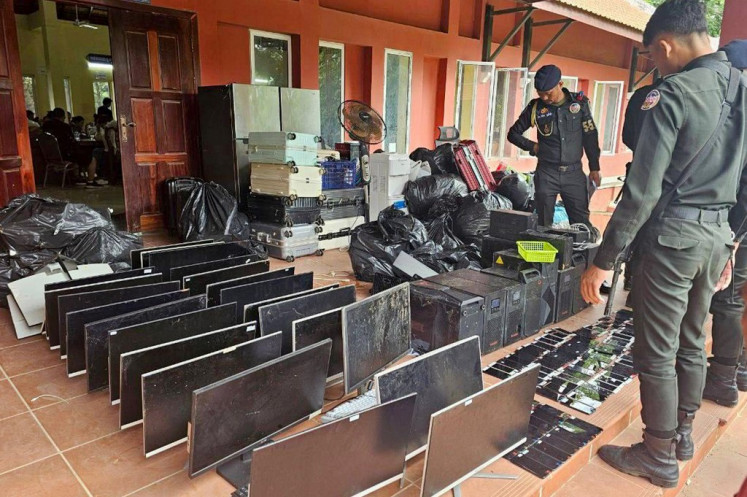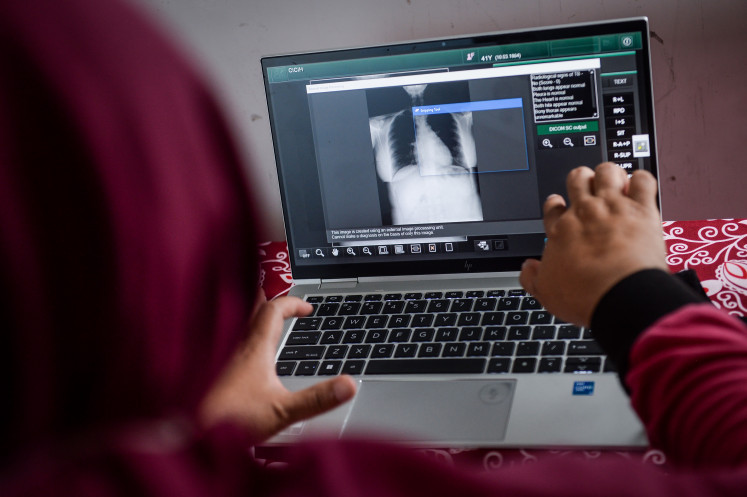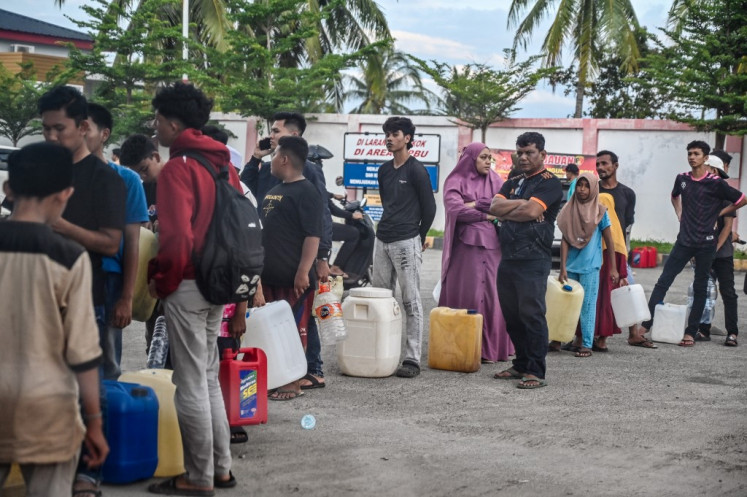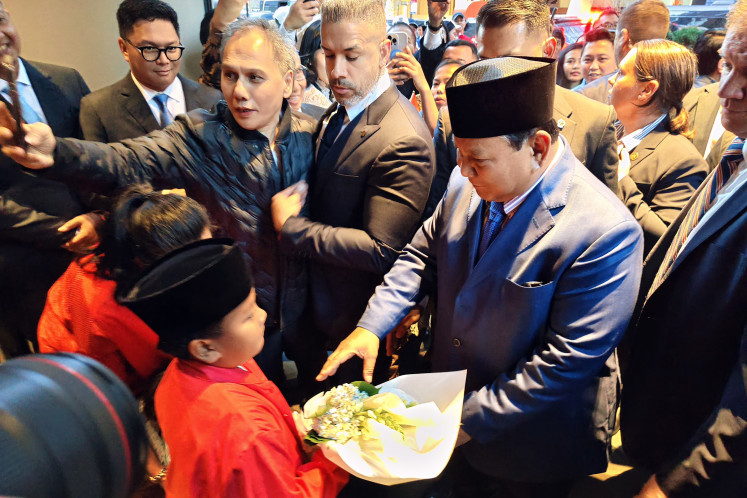Popular Reads
Top Results
Can't find what you're looking for?
View all search resultsPopular Reads
Top Results
Can't find what you're looking for?
View all search resultsRobots and AI: A new economic era
When developed countries adopt robots and AI, it has an impact on trade with developing countries, leading to increased exports from developing to developed countries, particularly in sectors experiencing high levels of robotization.
Change text size
Gift Premium Articles
to Anyone
B
efore I start, let me share with you two facts: First, this article is written by a human. I was born and delivered by organic parents. But soon many articles and most – if not all– goods and services will be produced, operated, and delivered by robots and artificial intelligence (AI). Robots and AI will change not only the way we work, but also the way we live.
Second, it took 75 years for telephones to reach 100 million users, but it took only two months for ChatGPT to get the same number of users. Currently, ChatGPT boasts 1.8 billion visitors a month. This showcases the massive power and rapid growth of robots and AI, which are leading us to a new economic era.
Now, let’s discuss how robots and AI will affect the world economy from three aspects: productivity, trade, and labor.
First, let's examine the impact of robots and AI on productivity. The adoption of robots and AI has demonstrated positive effects on productivity, both at the firm level and in aggregate. Industrial robots and AI systems contribute to significant productivity gains by enabling more accurate and precise work processes, leading to a reduction in production costs.
These technological advancements result in decreased production and operational expenses. Robots are capable of performing tasks faster than humans, with greater precision and accuracy. AI can also be utilized to anticipate issues along the production line and leverage computational power as an input for production.
An example: Workers in firms that have adopted industrial robots and automatic machines in Indonesia have been found to be 49 percent more productive compared to those in non-automating firms. At the global level, firms that adopt robots and AI tend to produce more outputs and have higher levels of productivity. They also tend to exhibit higher export shares, offering markets a greater variety and higher quality goods.
Second, let’s explore the impact of robots and AI on Trade. The adoption of robots and AI facilitates trade in goods and services. When developed countries adopt robots and AI, it has an impact on trade with developing countries, leading to increased exports from developing to developed countries, particularly in sectors experiencing high levels of robotization. An increase of 10 percent in robot density in developed countries is associated with an increase of 12 percent in exports from developing countries.
Larger and more globally connected firms in developing countries are more likely to adopt robots and AI, which allows them to expand their market shares at the expense of non-automating firms. Furthermore, the greater deployment of robots and AI leads to increased services trade, which ultimately enhances global trade.
Third, let's now explore the impact of robots and AI on labor and wages. Robots and AI will influence labor in three ways. First, there are displacement effects, where routine work will be replaced by robots and AI, resulting in negative effects on less skilled labor due to the displacement mechanism. Second, there are productivity effects, as robots and AI have positive impacts on labor and wages by enhancing firms' productivity and competitiveness. Lastly, there are reinstatement effects, where robots and AI reintegrate workers into a wider range of tasks, thereby altering the nature of tasks in favor of skilled workers.
Displacement of jobs by machines generates adjustment costs, as workers need to move within firms to perform different tasks, or search for new jobs in different firms or expanding industries. But most occupations conduct non-routine as well as routine tasks, so the medium-term outlook may not be so bleak, as workers shift their attention to tasks that machines cannot perform. Industrial robots, automation, and AI are likely to have heterogeneous effects in the labor market. High-skilled workers, those employed in technology-intensive sectors, and those performing non-routine tasks may benefit as industrial robots leverage their productivity. Workers with less education, especially those performing manual tasks on the production line, are most at risk.
Whereas research findings are mixed about the net effects of continued advances in the use of industrial robots and AI on certain segments of the labor market, there is little disagreement about the distributional implications. Overall, the adoption of robots and AI will provide more advantages for capital owners and skilled workers and thus increase inequality.
In conclusion, considering the positive impacts of robots and AI on the world economy through increased productivity, trade, and the creation of new skills, the forthcoming technological developments in robotics and AI need to be welcomed rather than discouraged.
However, we should take note that with the current AI neuron system, AI possesses more knowledge than any human on Earth. AI also operates 125,000 times faster than the human brain. The annual number of robot installations worldwide has more than tripled in the last decade, reaching a total of over 500,000 by the end of 2021. Global corporate investment in AI has increased 17 times since 2015, amounting to US$190 billion in 2022.
If AI falls into irresponsible hands, it could pose significant challenges to human existence. Therefore, we need to ensure that the resources and development capacity of robots and AI are balanced with appropriate safeguards and regulations. Along with the development of robots and AI, it is our responsibility to ensure that they are well managed, regulated, human-centric, and designed to improve human welfare.
***
The writer is secretary-general of the International Economic Association (IEA) and lead advisor (Southeast Asia Region) at the Economic Research Institute for ASEAN and East Asia (ERIA). The views expressed are personal. The article has appeared in eria.org.

